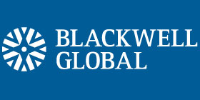The People’s Bank of China this week announced a raft of stimulus measures aimed at propping up a faltering economy. What were they and will this have any effect?Or will it merely kick the can down the road.
The PBOC is obviously worried about the coming economic slowdown in China. It would be pretty spectacular for a country to expand at 7+% per year for perpetuity, so it’s no surprise to see China slow down to more sustainable levels. The PBOC doesn’t seem to agree and have pulled out the big guns, and to keep the party going they have put the credit card down on the bar.
It is difficult to get current statistics on GDP, but looking at the Caixin Manufacturing PMI paints a dire picture. The Index has fallen to its lowest level ever since the index was first published in 2011, at just 47.1. The price of Iron Ore, which gives a good indication of demand for steel in China, has almost halved in a year, following much the same path as the price of oil.
The Devaluation of the Yuan two weeks ago was the first in a series of stimulus measures. The PBOC could sense the coming storm and sought to devalue the Yuan by 4.6% over the course of the week in order to give exporters a boost. This arguably set the market off as it signalled that the central bank was worried, and when a central bank worries, obviously a market worries too. The Yuan could have fallen further had it not been for the PBOC actually propping it up by selling $106 billion worth of US treasuries amid the chaos this week.
After the rout in Chinese equities this week, when the Shanghai composite shed 16.6% in three days, The PBOC stepped in and offered 450 billion Yuan worth of Seven day reverse-repos this week. Borrowing costs have risen in recent weeks as capital flees the sinking ship, and the PBOC are trying to halt that to support the domestic credit markets.
The PBOC did not stop there. They slashed the Reserve Requirement Ratio (RRR), the amount of capital banks must hold, by 50 basis points. This will release an estimated 750 billion Yuan into the system. At the same time, Interest rates were cut by 25 basis points to 4.6% for 1 year loans, and 1.75% for deposits. They also sold 60 billion Yuan worth of 3 month treasury deposits on behalf of the Finance Ministry at just 3% coupon, the lowest since 2010. It also added 140 billion Yuan in 6 day loans via its Short Term Liquidity Operations facility.
To say the PBOC are quite concerned about a full blown credit crunch is an understatement. Will it work though? That remains to be seen, but looking back at the US growth rates since the GFC and all of the liquidity they provided does not fill me with hope. The US hasn’t raised interest rates since 2006 and it looks like they will not get a chance any time soon. China have, arguably, acted earlier in the cycle than the US did before the credit crunch hit in 2008, but the stock market has still seen a solid correction.
The markets are still spooked and have not rallied significantly on the stimulus. This suggests the markets expect worse things to come and the PBOC will need to try harder.
